It won’t be long before models like the X3, X5, and X7 make up for the majority of sales both in the U.S. and around the world for BMW. That’s right; the automaker which is famous for building an array of coveted M cars and originally helping to usher in the sport sedan will soon be primarily in the business of producing Sports Activity Vehicles. This December marks 21 years since the X5 was first put through its paces for the pages of Roundel. While the SUV craze continues at a a seemingly ever-increasing pace, it remains difficult to understate the importance of the first-generation X5 when it arrived at the end of the last millennium. At least a few saw what was coming after a drive in the then-new X5 though, and you might be surprised to see just how accurate their vision of the future of BMW and models like the X5 was back in 1999. Looking back, there’s no question that BMW was visionary, and instrumental in the creation of the most popular current automotive segment, the luxury SUV.—Alex Tock
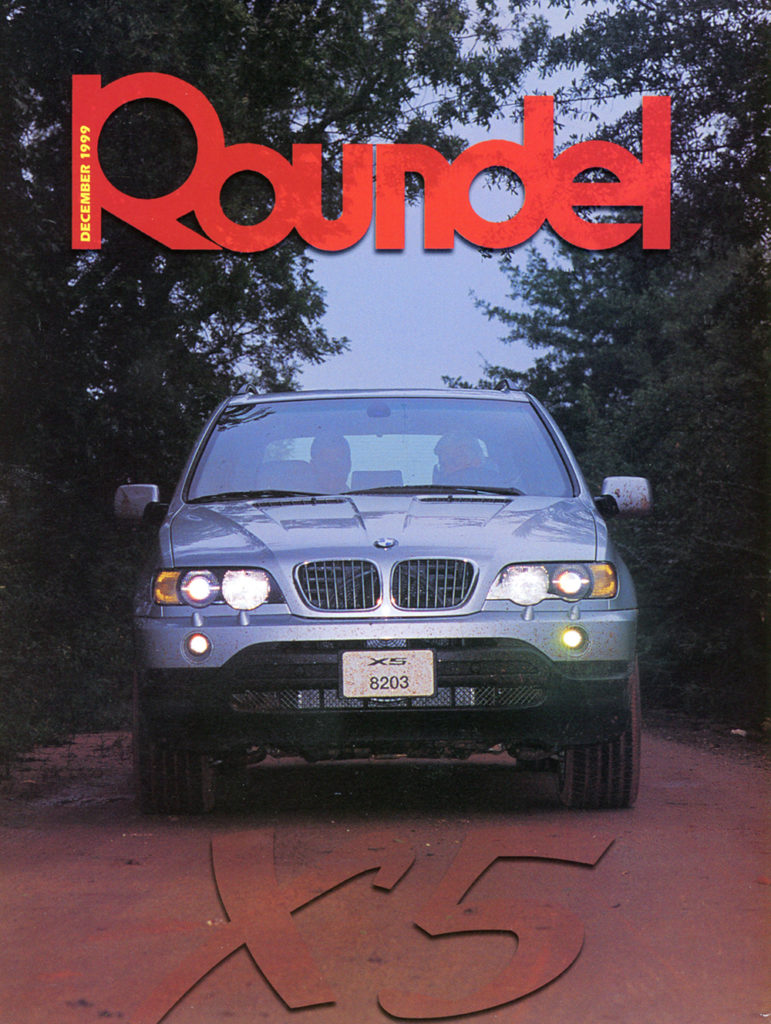
The Roundel crew teams up to take the X5 through its paces with surprising results. For one thing, they were expecting dry weather, not the monsoon that turned farm roads into gloppy muck—but they turned us loose anyway. And then they opened the gates at Road Atlanta…
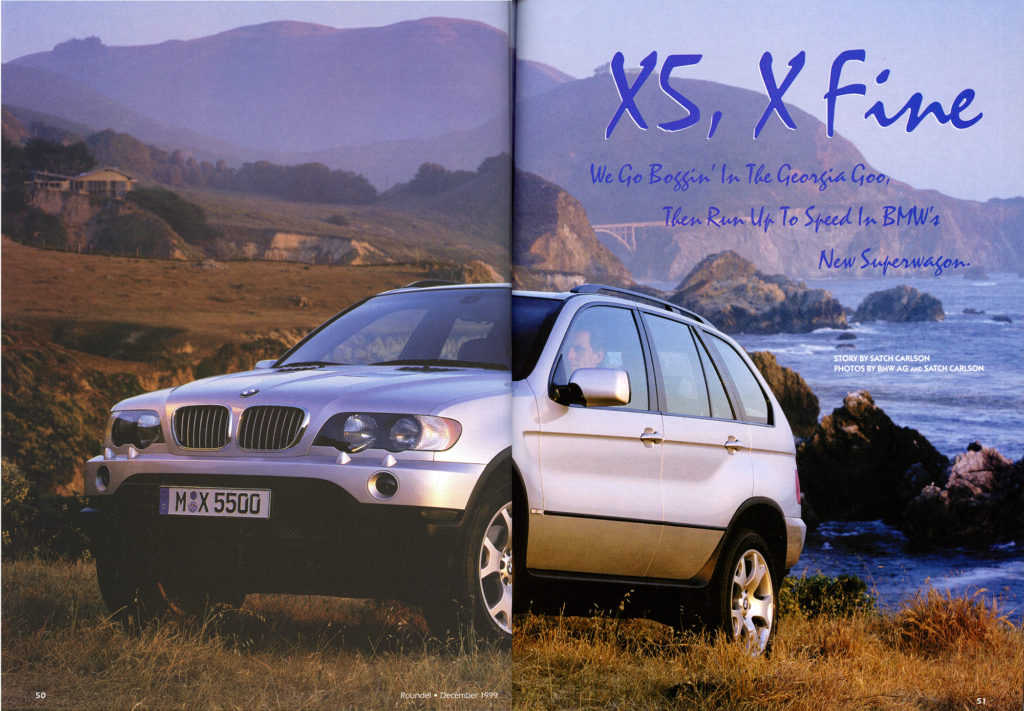
It doesn’t take more than twenty minutes on the rain-slick country roads south of Atlanta before Ken Gross offers the ultimate compliment to the new X5: “It feels like a 5 Series,” he says, “except you’re up higher.” He continues a lyrical comparison of the X5’s handling to the truck-like grace of the competition—specifically Mercedes—as we sweep through curves and bends at a brisk pace. After all, we are not here to dawdle; Gross—old friend and colleague, long-time Roundel contributor, writer for everything from Playboy to The Robb Report, and director of the Petersen Automotive Museum—and I are here to finally take full measure of the new X5, and our schedule is full. We are on our way first to a backwoods farm, where we have been assured we will be allowed to take the Sports Activity Vehicle on an “other roads” excursion, after which we will take it where you might expect us to try out a new BMW: the delightful asphalt of Road Atlanta.
I glance at the passing trees as we zip through a smooth left-hander. “If we were in a Ford Exploder,” I mutter, “we’d be upside-down by now.”
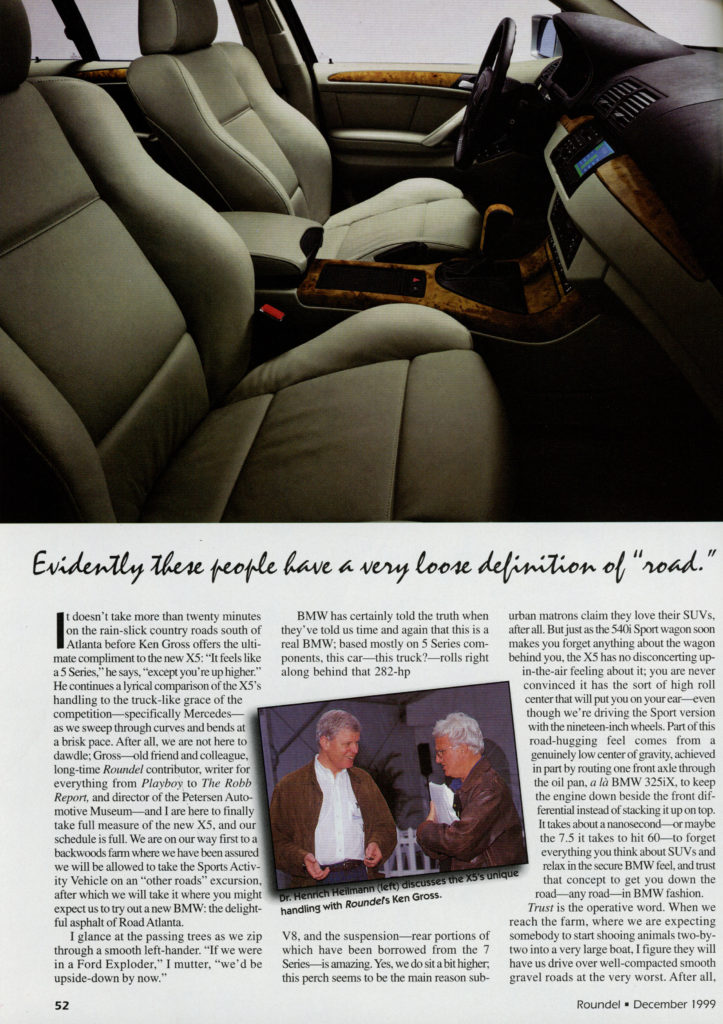
BMW has certainly told the truth when they’ve told us time and again that this is a real BMW; based mostly on 5 Series components, this car—this truck?—rolls right along behind its 282-horsepower V8, and the suspension—rear portions of which have been borrowed from the 7 Series—is amazing. Yes, we do sit a bit higher; this perch seems to be the main reason suburban matrons claim they love their SUVs, after all. But just as the 540i Sport wagon soon makes you forget anything about the wagon behind you, the X5 has no disconcerting up-in-the-air feeling about it; you are never convinced it has the sort of high roll center that will put you on your ear—even though we’re driving the Sport version with the nineteen-inch wheels.
Some of this road-hugging feel comes from a genuinely low center of gravity, achieved in part by routing one front axle through the oil pan, à la BMW E30 325iX, to keep the engine down beside the front differential instead of stacking it up on top. It takes about a nanosecond—or maybe the 7.5 it takes to hit 60—to forget everything you think about SUVs and relax in the secure BMW feel, and trust that concept to get you down the road—any road—in BMW fashion.
Trust is the operative word. When we reach the farm, where we are expecting somebody to start herding animals two-by-two into a very large boat, I figure that they will have us drive over well-compacted smooth gravel roads at the very worst. After all, the BMW minions willing to talk about it have said that the X5 is not an off-road vehicle, it’s just supposed to be competent no matter what kind of a road you take it on.
Evidently these people have a very loose definition of road.
We no sooner arrive at the farm than we are conducted to the starting line of what looks to be a meandering goatherd’s trail off into the woods. Moreover, since they are looking for opinion, especially American opinion—remember, this whole X5 project was hatched in the California design center and is aimed at the U.S. market—they naturally turn to the Roundel team, since we have very direct opinions about everything BMW, especially when you’re talking performance. In fact, we toss BMW AG’s Henrich Heitmann into the back seat and hit the eight-kilometer trail to see what his baby will do.
Man. It does everything.
Now, I am no stranger to herding various cars over ruts and rocks and gravel and grass, two-wheel-drive or four, front or rear, so I figure if this thing is going to beat us like a buckboard or fall into hysterics at the first sign of adversity then we might as well find out right now. The All-Season Traction (AST) keeps me from flinging rocks and mud and grass a hundred yards, and I soon learn to ease onto the gas to keep AST from kicking in (and slowing us down) every time I get excited. Soon I have the little rat flying—yes, I know it’s technically classified as a Light Truck, but it feels little—and of course we keep finding the sort of holes and hummocks that make you grit your teeth and brace for the impact—only there isn’t one. None of that UP-and-down HOLY COW SLOW DOWN YOU MORON bucking that usually accompanies such off-road exuberance; the suspension simply swallows up the nasties—although I have no predictions for how long the shocks would last if you kept up this kind of abuse from here to Dakar.
Soon we come to the edge of a cliff—okay, the goat path goes straight down the face of the thing, so it’s probably not as steep as it looks—where a BMW rep is standing in the rain for the sole purpose of telling us to switch on the Hill Descent Control. Talk about trust! What this gizmo does is tie together the AST with the AF of L and EIEIO—well, here’s BMW’s official explanation:
The BMW X5 comes standard with the most advanced stability control system on the market: A custom-tailored version of Dynamic Stability Control (DSC-X) which includes the functions of ABS, CBC (Cornering Brake Control), DBC (Dynamic Brake Control), and AST (All Season Traction). The X in the X5’s DSC-X stands for the all-wheel-drive version of BMW’s electronic stability enhancement system. The main benefit of DSC-X, especially on slippery roads, is the increase in driving safety in abrupt maneuvers or in sudden moments of danger when taking a curve. To help avoid an accident in such a situation, the system is able to apply the brakes individually to each of the four wheels and, if necessary, reduce engine power. [Damn!—SC] And now, to ensure superior safety on any road at any time, DSC-X has been supplemented by two additional functions: ADB Automatic Differential Brake and “intelligent” HDC (Hill Descent Control).
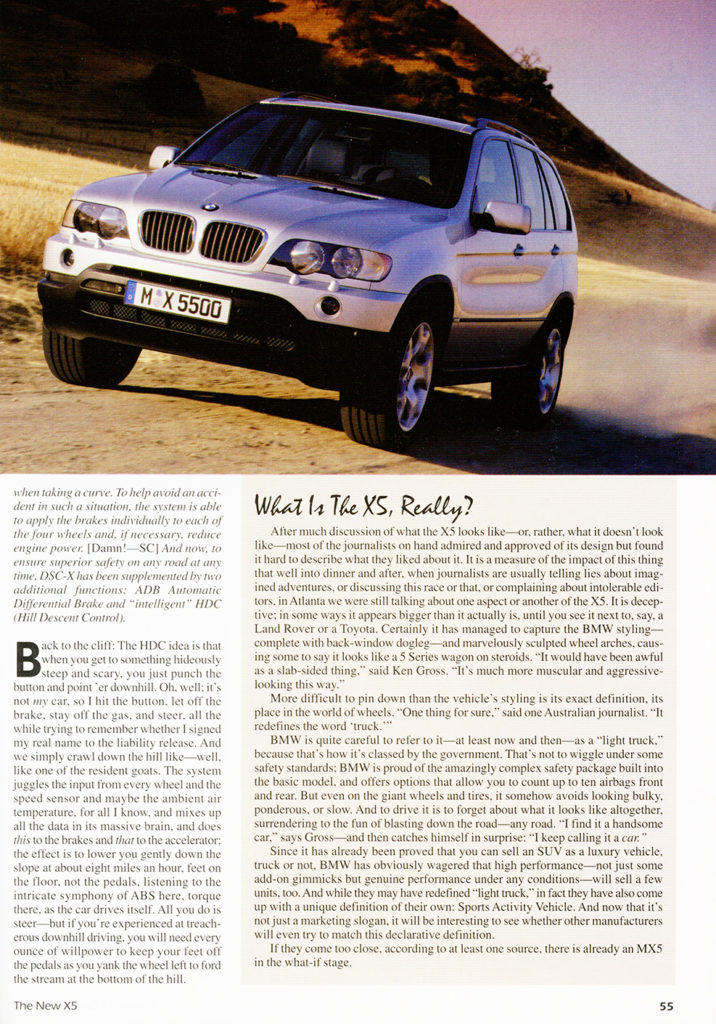
Back to the cliff: The HDC idea is that when you get to something hideously steep and scary, you just punch the button and point ’er downhill. Oh, well; it’s not my car, so I hit the button, let off the brake, stay off the gas, and steer, all the while trying to remember whether I signed my real name to the liability release. And we simply crawl down the hill like—well, like one of the resident goats. The system juggles the input from every wheel and the speed sensor and maybe the ambient air temperature, for all I know, and mixes up all the data in its massive brain, and does this to the brakes and that to the accelerator; the effect is to lower you gently down the slope at about eight miles an hour, feet on the floor, not the pedals, listening to the intricate symphony of ABS here, torque there, as the car drives itself. All you do is steer—but if you’re experienced at treacherous downhill driving, you will need every ounce of willpower to keep your feet off the pedals as you yank the wheel left to ford the stream at the bottom of the hill.
Up the hill on the other side is an easy matter, although again I have to modulate my foot to keep the electrons from overruling my enthusiasm, and soon we are flying along the grassy two-track at just above silly, until finally I stop and reluctantly hand over the wheel to Gross at the half-way point. Which proves to be a smart move after all, because this means that I get to lounge in the comfort of the right-hand sport seat while Gross takes us deeper into the woods, to the Land of Mud—where in a downhill right-hand side-hill turn we simply start adding a sideways vector to our forward progress; we are in something greasy slick.
What is slick? Slick is a guy taking your money time after time after time while you try to follow the red queen. Slick is a Chinook wind bringing warm rain over black ice. Slick is slimy stuff on brass doorknobs. Slick is what happens when it rains in Georgia until the red clay forms a rust-colored glop that sticks like JB Weld to everything it touches. The gooey ruts in the red-clay road just keep getting deeper and deeper and deeper, until you come to the conclusion that it’s all red bog to the center of the earth, that quite possibly this stuff swallows up cows and trucks and tourists like B-movie quicksand. You’d be a fool to even step in it, let alone try driving over it, and a bigger fool to hand over your keys and let some other fool drive over it.
Yet here we are, astounded.

The thing is, we are on these nineteen-inch wheels, as I said before, and the back ones are nine inches wide, for heaven’s sake; and mounted to these rims are great big wide Bridgestone tires that are meant for hauling Suzy to soccer practice or something. We are in goopy mud that would make you quail if you were running BFG Bajas on a desert sled, and the poor Bridgies are packed with clay to the point where they cannot resist sliding sideways, what with gravity and all. Now, in the Olden Times, we would start flinging mud and digging holes until we were well and truly buried to the gunnels, but we have the Ultimate Traction Control, remember? The X5 won’t back up the hill—although it’s interesting to lean out and watch individual wheels slip and lock, slip and lock in the slippery clay—and we are no longer entirely on what we charitably call the road; in front of us are some bushes—okay, some very immature trees—which Gross finally decides to sacrifice. Sure enough, once more in Drive, the X5 happily crawls forward in its computer-controlled no-slip fashion, moving on a semi-sideways path through the flora until we are on level ground and back on the path once more, picking up speed as we head for another bog.
This one we handle with aplomb, since Gross gives the car room to slide; but there is amazingly little slog and slosh as the little computers do their work. You can fling the car into the muck and get it partially sideways, yes, but then all the systems straighten it out again before you can savor your hero-driver display. I turn to Dr. Heitmann. “In your language,” I ask, “do you have a term like mud-boggin’?” For that is what we have been doing, after all, although admittedly in a sedate fashion—and I suddenly realize that there lurks in the primitive mid-brain a tiny testosterone-driven imp that absolutely revels in this off-road behavior, that really wants to go splashing in the puddles, playing in the mud, no matter how civilized one’s outward veneer (admittedly, my veneer is thinner than most in this regard). No off-road, indeed!
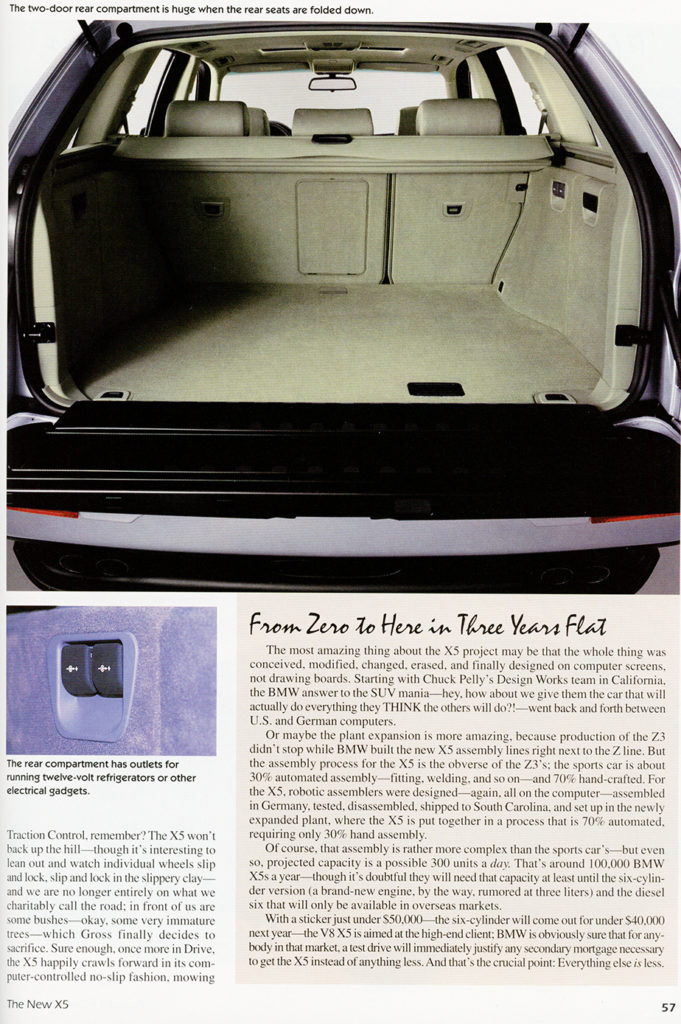
But the amazing off-road performance is not what we came for. After all, this is a BMW, and not just because it carries a roundel above the kidney grilles. After the BMW detailers clean the mud off the X5—they are glaring at the Roundel crew for some reason, perhaps because we were successful at covering the upper body, the hood, even the roof of the X5 with red clay, while other journalistic mud-boggin’ poseurs have barely soiled their fenders—we grab a quick sandwich and hit the highway to Road Atlanta.
For some reason Dr. Heitmann declines our offer of a ride.
At Road Atlanta, where the rain has passed and the track is drying, we get another surprise. While we had been expecting a bit of a controlled exercise, maybe BMW test drivers showing us around and then letting us take a turn under their critical gaze, it’s more like the farm: Here’s the track. Go.
Now, there are a few caveats here. For one thing, we are not making full circuits of the track; on each lap we come tooling through the pits to be waved back out at the proper interval. This keeps us from catching and dicing with the car in front, as well as keeping us away from the long straight and Atlanta’s sometimes-tricky Turn One. But that’s it; we aren’t even wearing helmets. BMW is obviously so confident of this car’s ability to save us from ourselves that they can’t imagine any trouble we can get into that the X5 can’t get us back out of.
But I certainly give it a try.
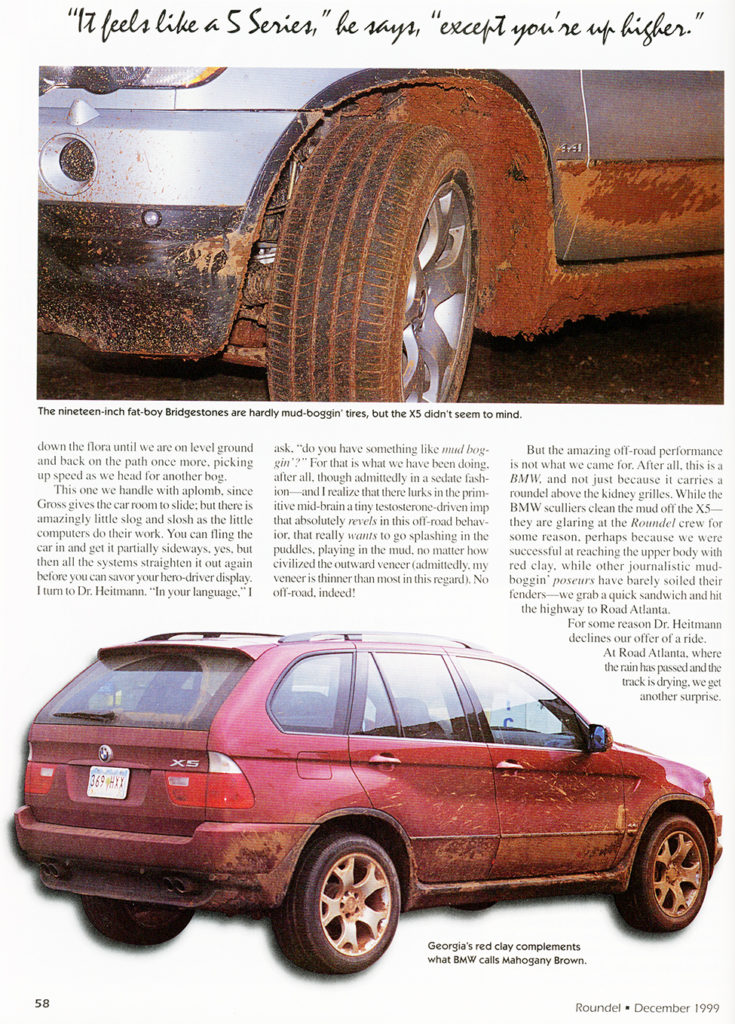
For one thing, I cheat. We are only supposed to take a few laps, no doubt to keep us from really wailing once we learn the track. But I quickly offer the right seat to A Certain BMW Employee Who Shall Remain Nameless because I know that he is an unreconstructed racer and that he knows Road A better than I know Laguna Seca, and in a very short time I am flat hauling the X5 around the corners, flailing at the Steptronic in Manual Mode and trying my level best to drift to the utter edge of the asphalt. (Although we had once been solemnly assured that the V8 would come with a stick, that memory faded fast at Spartanburg, and I soon abandon the useless Manual setting in favor of keeping my foot planted in Drive while I curse the lack of a useful six-speed manual—until I admit that when you think about it, the target market for this rig is probably not going to gnash their collective teeth in anguish because they can’t carve another second from their race-track laps.)
I simply cannot get this thing sideways—early apex, late apex, brake in the corners, it doesn’t care—and finally I just content myself with seeing how fast I can get around and back to the pits.
On the back straight at Atlanta, there is a gentle kink to a downhill straight. “Do you think,” I say, “that I can take that kink flat in fifth?”
“Sure,” says Dr. Evil. “Just be sure to brake at the end of the downhill.”
So I perform that most trusting of BMW rituals: Fly into the bend with absolute confidence that the car will get you through the other side. And as we brake, grinning, at the end of the downhill, trailing into the left-right bend and flooring the V8, I start to giggle at the idea that it may soon come to pass that some people will show up at a CCA driving school only to discover that their tow vehicles are faster than what they brought on their trailers—and I realize just what activity they had in mind when they called this a Sports Activity Vehicle.
After much discussion of what the X5 looks like—or, rather, what it doesn’t look like—most of the journalists on hand in Atlanta admired and approved of its design, but found it hard to describe what they liked about it. It is a measure of the impact of this thing that well into dinner and after, when journalists are usually telling lies about imagined adventures, or discussing this race or that, or complaining about intolerable editors, in Atlanta we were still talking about one aspect or another of the X5. It is deceptive; in some ways it appears bigger than it actually is, until you see it next to, say, a Land Rover or a Toyota. Certainly it has managed to capture the BMW styling—complete with back-window dogleg—and marvelously sculpted wheel arches, causing some to say it looks like a 5 Series wagon on steroids. “It would have been awful as a slab-sided thing,” said Ken Gross. “It’s much more muscular and aggressive-looking this way.”
More difficult to pin down than the vehicle’s styling is its exact definition, its place in the world of wheels. “One thing for sure,” said one Australian journalist. “It redefines the word truck.”
BMW is quite careful to refer to it—at least now and then—as a “light truck,” because that’s how it’s classed by the government. That’s not to wiggle under some safety standards; BMW is proud of the amazingly complex safety package built into the basic model, and offers options that allow you to count up to ten airbags front and rear. But even on the giant wheels and tires, it somehow avoids looking bulky, ponderous, or slow. And to drive it is to forget about what it looks like altogether, surrendering to the fun of blasting down the road—any road. “I find it a handsome car,” says Gross—and then catches himself in surprise: “I keep calling it a car.”
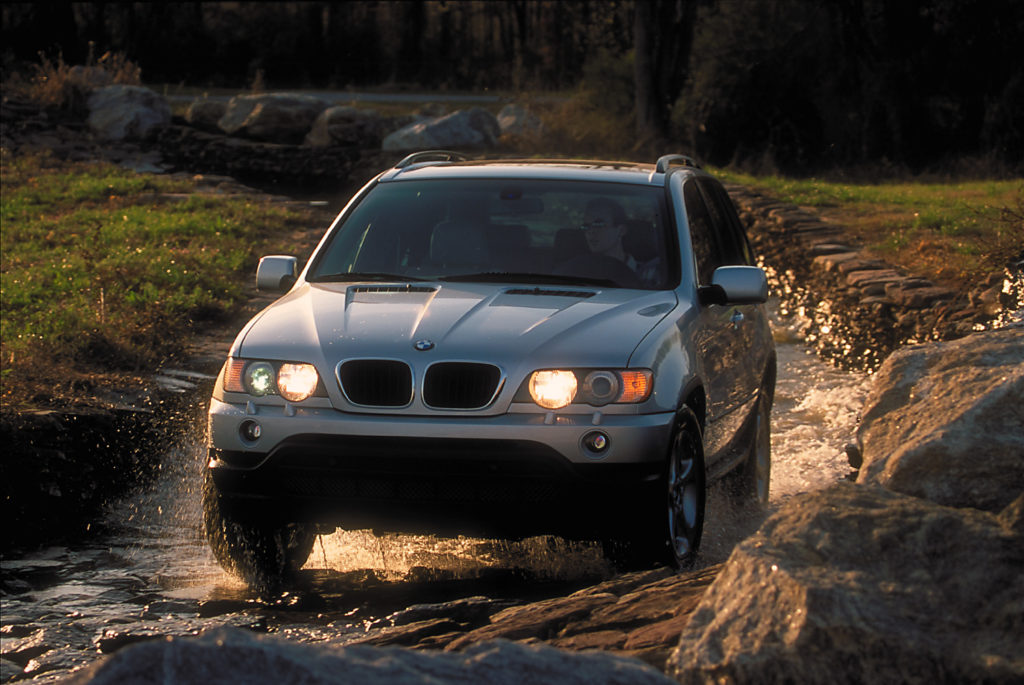
Since it has already been proved that you can sell an SUV as a luxury vehicle, truck or not, BMW has obviously wagered that high performance—not just some add-on gimmicks but genuine performance under any conditions—will sell a few units, too. And while they may have redefined “light truck,” in fact they have also come up with a unique definition of their own: Sports Activity Vehicle. And now that it’s not just a marketing slogan, it will be interesting to see whether other manufacturers will even try to match this declarative definition. If they come too close, according to at least one source, there is already an M X5 in the what-if stage.
The most amazing thing about the X5 project may be that the whole thing was conceived, modified, changed, erased, and finally designed on computer screens, not drawing boards. Starting with Chuck Pelly’s Designworks team in California, the BMW answer to the SUV mania—hey, how about we give them the car that will actually do everything they THINK the others will do?!—went back and forth between U.S. and German computers.
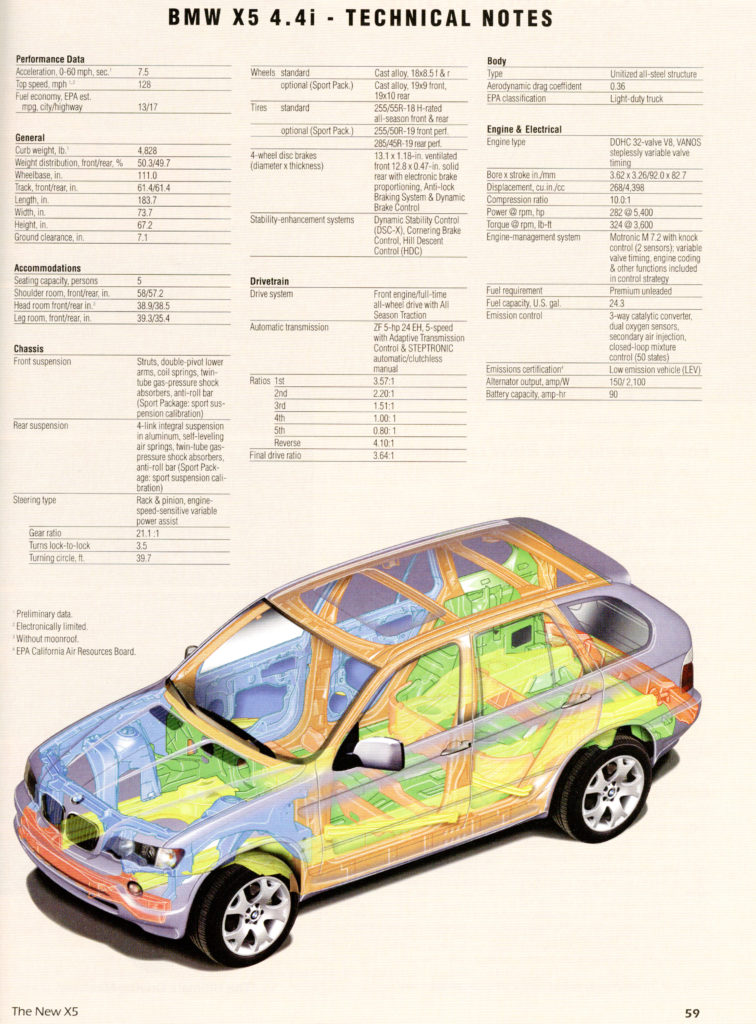
Or maybe the Spartanburg plant expansion is more amazing, because production of the Z3 didn’t stop while BMW built the new X5 assembly lines right next to the Z line. But the assembly process for the X5 is the obverse of the Z3’s: the sports car is about 30% automated assembly—fitting, welding, and so on—and 70% hand-crafted. For the X5, robotic assemblers were designed—again, all on the computer—assembled in Germany, tested, disassembled, shipped to South Carolina, and set up in the newly expanded plant, where the X5 is put together in a process that is 70% automated, requiring only 30% hand assembly.
Of course, that assembly is rather more complex than the sports car’s—but even so, projected capacity is a possible 300 units a day That’s around 100,000 BMW X5s a year— although it’s doubtful they will need that capacity at least until the six-cylinder version (a brand-new engine, by the way, rumored at three liters) and the diesel six that will only be available in overseas markets.
With a sticker just under $50,000—the six-cylinder will come out for under $40,000 next year—the V8 X5 is aimed at the high-end client; BMW is obviously sure that for anybody in that market, a test drive will immediately justify any secondary mortgage necessary to get the X5 instead of anything less. And that’s the crucial point: Everything else is less.—Satch Carlson
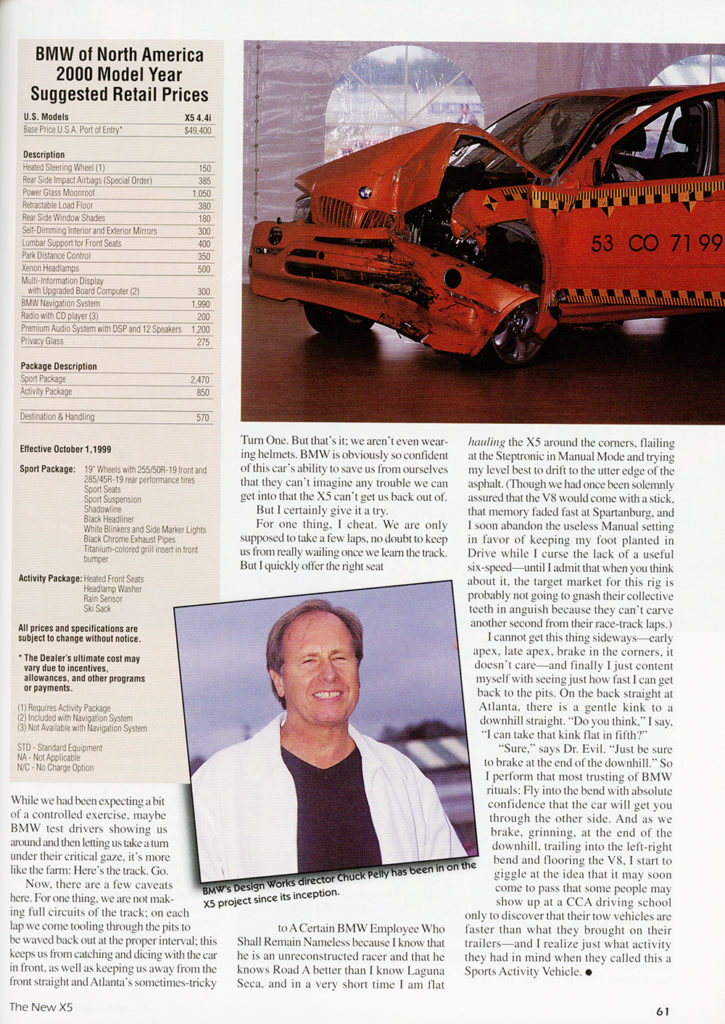
[Original photos courtesy Satch Carlson, BMW AG.]





















